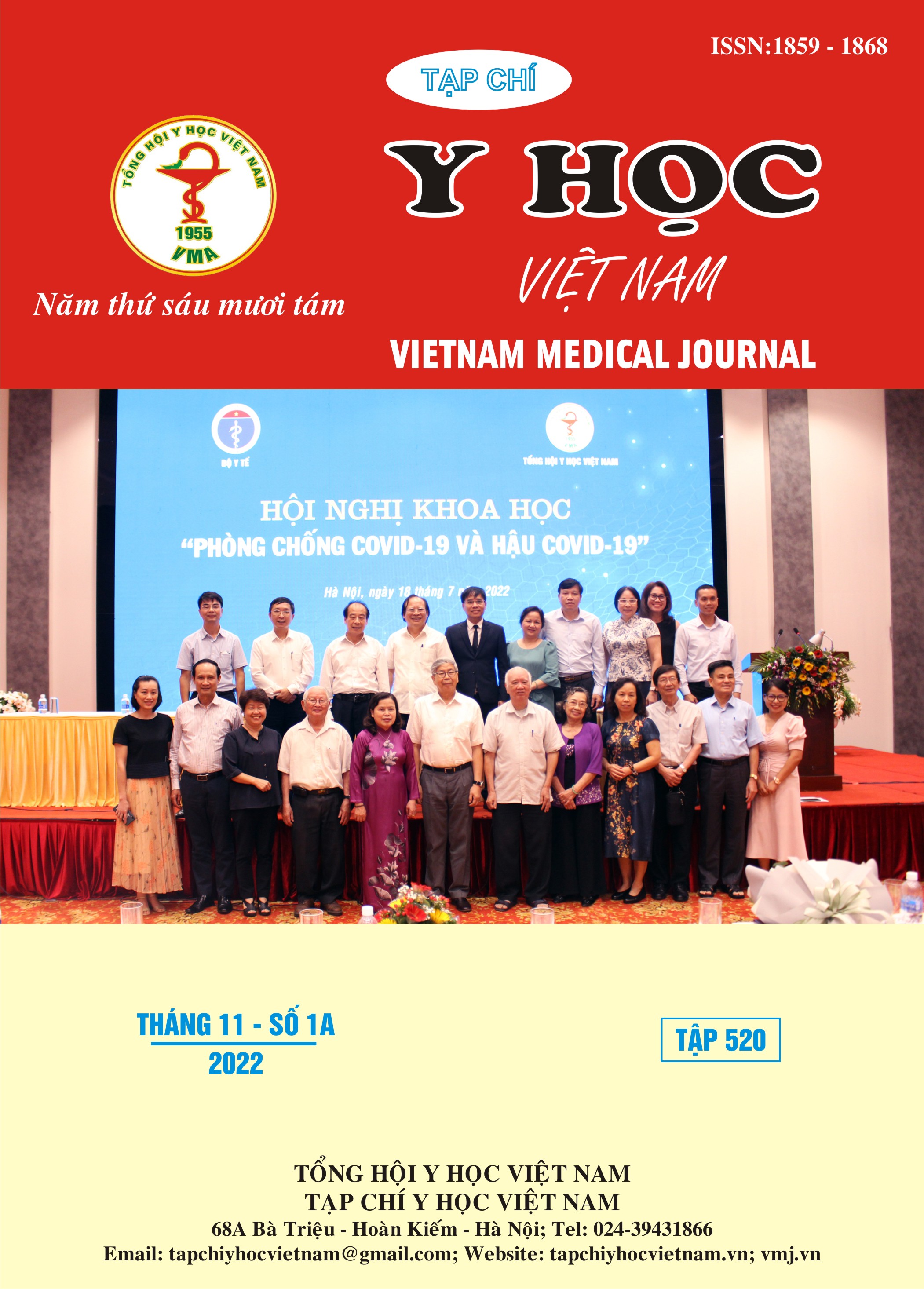PREVALENCE OF ACCEPTANCE USING CONTRACEPTION AFTER ECTOPIC PREGNANCY SURGICAL IN HUNG VUONG HOSPITAL
Main Article Content
Abstract
Background: Knowing that the patient' s contraceptive acceptance rate before and after an ectopic pregnancy surgery and their relationships can be proposed for appropriate consulting programs for each type of object to reduce the ectopic pregnancy rate and improve reproductive health. Objective: Determining the acceptance rate of contraception in patients with indications for ectopic pregnancy surgery at Hung Vuong hospital and analyzing factors related to the acceptability of contraception. Methods: Cross-sectional study on 390 cases of patients with indications for surgery due to ectopic pregnancy at Hung Vuong hospital from 11/2021 to 05/2022, data collection by interview method with structured questionnaire. Results: Acceptance rate of UTI of customers after surgery is 86.4% [95% CI: 83-89.8], factors related to contraceptive acceptance include: History of using contraceptive method increases the rate the difference in PR for accepting contraceptive methods after surgery was 4.68 times higher than that of never using a contraceptive before [PR*=4.68; 95% CI 0.002-0.97], secondary education group [PR*=23.26; 95% CI 1.19-451.97], high school education group [PR*=19.39; 95% CI 1.08-346.87]. Conclusions: It is necessary to establish a thorough counseling session for the client before discharge about reproductive health such as adverse events after ectopic pregnancy, especially mental factors. Provide correct and sufficient knowledge about contraceptive methods for patients, especially interested in the group of customers who have no experience in using and have low education.
Article Details
Keywords
ecotipc pregnancy, contraception, salpingectomy, cross-sectional study, prevalence
References
2. CDC. Ectopic pregnancy--United States, 1990-1992. vol 44. Centers for Disease Control Prevention; 1995:46-48.
3. Goldner TE, Lawson HW, Xia Z, Atrash HKJM, Summaries MWRCS. Surveillance for ectopic pregnancy—United States, 1970–1989. 1993:73-85.
4. Park JE, Yuk J-S, Cho IA, Baek JC, Lee J-h, Park JKJSr. Ectopic pregnancy incidence in the Republic of Korea in 2009–2015: A population-based cross-sectional study. 2018;8(1):1-5.
5. Rajkhowa M, Glass M, Rutherford A, et al. Trends in the incidence of ectopic pregnancy in England and Wales from 1966 to 1996. 2000;107(3):369-374.
6. Coste J, Bouyer J, Ughetto S, et al. Ectopic pregnancy is again on the increase. Recent trends in the incidence of ectopic pregnancies in France (1992–2002). 2004;19(9):2014-2018.
7. Hồ Bảo Trân. Tỷ lệ chấp nhận biện pháp tránh thai hiện đại và các yếu tố liên quan ở phụ nữ sau phá thai tại Trung Tâm Chăm Sóc Sức Khỏe Sinh Sản tỉnh Long An. Luận văn Thạc sĩ Y học. Đại học Y Dược Tp.HCM; 2012.
8. Huỳnh Thanh Phong. Tỷ lệ chọn lựa các biện pháp tránh thai hiện đại và các yếu tố liên quan ở phụ nữ đến phòng tư vấn ngừa thai bệnh viện Hùng Vương. Luận văn Thạc sĩ Y học, Đại Học Y Dược Thành Phố Hồ Chí Minh; 2016.
9. Trần Đại Quân, Võ Minh Tuấn. Tỷ lệ chấp nhận các biện pháp tránh thai hiện đại ở phụ nữ sau phá thai tại bệnh viện phụ sản Mekong. Y học Tp Hồ Chí Minh. 2021;25(1):101-107.
10. Kamal N. The influence of husbands on contraceptive use by Bangladeshi women. Health policy planning. 2000;15(1):43-51.


